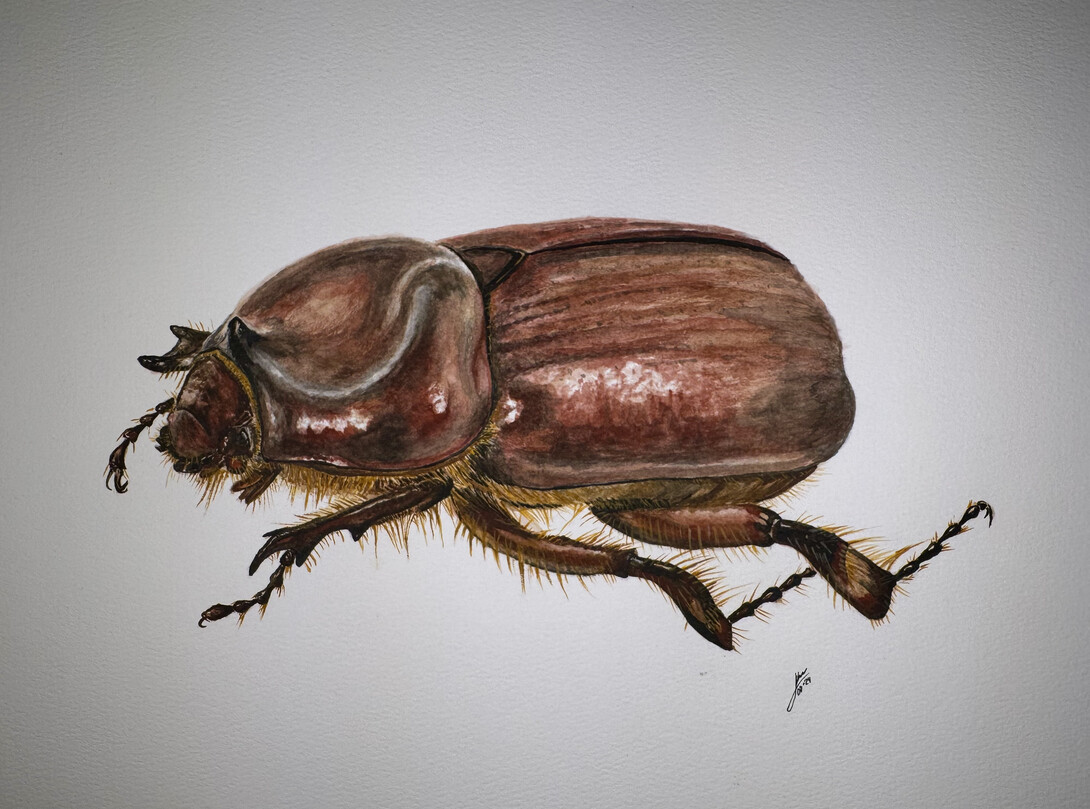
A new beetle species has been named to honor a fellow Husker, bridging the worlds of academia and wildlife conservation.
Brett Ratcliffe, emeritus professor of entomology at the University of Nebraska–Lincoln, named the recently discovered species Bothynus sartorei after Joel Sartore, a renowned National Geographic photographer and founder of the Photo Ark. The tribute recognizes Sartore's dedication to wildlife conservation.
“I’ve always been impressed by his passion for what’s he’s trying to do to conserve wildlife,” Ratcliffe said. “He’s an excellent speaker; he galvanizes his audiences. He’s doing a great job for society and for nature and for the planet, and this is one little way I can recognize him.”
Ratcliffe and co-author Ronald Cave, professor of entomology at the University of Florida, published their findings in the Journal of Insect Biodiversity.
Sartore’s lesser rhino beetle is dark reddish brown and measures in at 14.7 millimeters long and 7 millimeters wide (or slightly larger than half an inch by a quarter of an inch).
Ratcliffe and Cave are working on a project documenting Bolivian beetles. It will ultimately include 200 to 250 species of rhino beetles, including Sartore’s lesser rhino beetle. This specimen came from a collector in Canada and is the only known specimen of the species. As they continue field work in Bolivia and examination of collections for the project, they hope to find more, Ratcliffe said.
“Science is like that sometimes,” Ratcliffe said. “You find one and it turns out if you look closer, maybe you find more.”

Ratcliffe said he has known Sartore for about 15 years and their work in their respective fields is complementary.
“He’s educating the public, which then provides a foundation to support what I do as an academic,” Ratcliffe said.
Sartore was surprised, grateful and honored when he learned the news, he said. He said the permanence of having a creature named after you is an honor.
“It’s a small beetle, but I’m a big fan of the little creatures because they make the world go round,” Sartore said. “Dr. Ratcliffe is a major figure in natural history in Nebraska … He’s a great scientist, and I was very honored that the recommendation came from him.”
Sartore said scarab beetles are special because of their rich history and the role they play in the ecosystem.
“They clean everything up, much like ants,” Sartore said. “Without them, the planet would be a mess.”
Ratcliffe said the work of documenting, preserving and understanding wildlife and the natural world is crucial to conservation efforts as more species come under threat of extinction.
“If we don’t know the composition of plants and animals that make up the ecosystem, we can’t understand it, or control it, or conserve it,” he said. “In order to conserve, we have to know what’s out there."
Sartore said the work underscores how all species, including humans, and ecosystems are interconnected. Fish need clean water to survive, just as humans do, and some of the same lessons can be applied to insects.
“If you like fruits and vegetables, you’ve got to save bees and butterflies,” Sartore said. “Without all these other species, humanity will not be able to survive. We ignore nature at our own peril.”
Search the Photo Ark for photos of the world's creatures, including Sartore's lesser rhino beetle.








